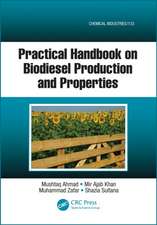Bioclimatic Architecture in Warm Climates: A Guide for Best Practices in Africa
Editat de Manuel Correia Guedes, Gustavo Cantuariaen Limba Engleză Paperback – 14 aug 2020
- Encompasses all climatic regions in Africa;
- Integrates bioclimatic design strategies with other sustainability issues;
- Discusses new design to refurbishment, from urban to rural, including office buildings, residential, tourism, social housing and self building.
| Toate formatele și edițiile | Preț | Express |
|---|---|---|
| Paperback (1) | 707.00 lei 6-8 săpt. | |
| Springer International Publishing – 14 aug 2020 | 707.00 lei 6-8 săpt. | |
| Hardback (1) | 656.89 lei 6-8 săpt. | |
| Springer International Publishing – 13 mai 2019 | 656.89 lei 6-8 săpt. |
Preț: 707.00 lei
Preț vechi: 831.76 lei
-15% Nou
Puncte Express: 1061
Preț estimativ în valută:
135.30€ • 140.74$ • 111.70£
135.30€ • 140.74$ • 111.70£
Carte tipărită la comandă
Livrare economică 14-28 aprilie
Preluare comenzi: 021 569.72.76
Specificații
ISBN-13: 9783030120382
ISBN-10: 3030120384
Pagini: 491
Ilustrații: XII, 491 p. 387 illus., 318 illus. in color.
Dimensiuni: 155 x 235 mm
Greutate: 0.7 kg
Ediția:1st ed. 2019
Editura: Springer International Publishing
Colecția Springer
Locul publicării:Cham, Switzerland
ISBN-10: 3030120384
Pagini: 491
Ilustrații: XII, 491 p. 387 illus., 318 illus. in color.
Dimensiuni: 155 x 235 mm
Greutate: 0.7 kg
Ediția:1st ed. 2019
Editura: Springer International Publishing
Colecția Springer
Locul publicării:Cham, Switzerland
Cuprins
Chapter1: Introduction.- Chapter 2: Climatic Contexts.- Chapter3: Bioclimatic project: general guidelines.- Chapter4: Vernacular architecture in arid climates: adaptation to climate change.- Chapter5: Vegetation and environmental comfort.- Chapter6: Shading, Daylighting and Ventilation: Learning from Maputo.- Chapter7: Software Tools.- Chapter8: Slums in African cities.- Chapter9: Sustainability challenges for Sub-Saharan Africa: Vulnerability, Justice and Human capabilities.- Chapter10: Towards sustainable and smart cities in Africa: A review and challenges.- Chapter11: Urban Management the building permit in an urban land development context.- Chapter12: Energy saving strategies.- Chapter13: Masonry.- Chapter14: Timber.- Chapter15: Bamboo.- Chapter16: Water, sanitation and drainage.- Chapter17: Built environment assessment systems in Africa.
Notă biografică
Professor Manuel Correia Guedes is an Architect, Ph.D. (Univ. Cambridge), and Associate Professor at the Instituto Superior Técnico (IST). He is the former Head of the Architectural Research Centre of the IST (ICIST-G1), and former Director of the Course of Architecture. Dr. Guedes specializes in Sustainable Architecture, and is responsible for the disciplines of Environmental Design and Sustainable Architecture of the Master and Ph.D. courses. He is an active participant in national and international research projects in the area, and is the Coordinator of E.U. cooperation projects with Africa and Asia.
Professor Gustavo Cantuária holds a degree in Architecture and Urbanism from the University of Brasilia, and a Masters and a PhD in Sustainable and Environmental Studies from the Architectural Association School of Architecture, in London, England. He completed postdoctoral studies as a visiting professor at the Martin Centre of the Department of Archictecture, at the University of Cambridge, England. He is a full professor and researcher of the post-graduate program in architecture at UniCeub Department of Architecture and Urbanism, in Brasilia, and an evaluator of INEP (National Institute of Studies and Research) from the Ministry of Education of Brazil. He maintains lines of research with international collaborations in all continents, with emphasis on sustainability and bioclimatic design, working mainly on the following topics: environmental comfort, sustainable architecture and urban transformation, passive cooling, urban landscaping and integration of the natural and built environments.
Textul de pe ultima copertă
This book provides a comprehensive, hands-on approach to bioclimatic building design in Africa. Bioclimatic design is at the core of urban sustainability, and is a critical issue in Africa, where “imported” building typologies are being used at an increasing pace, disregarding the local context and consequently causing damage to the environment, to the economy, and to the culture itself. This book provides a concise set of sustainable design guidelines to be applied in both new buildings and the refurbishment of old buildings, and integrates bioclimatic design strategies with other sustainability issues such as: cultural aspects, affordability, and urban planning. Chapters are fully illustrated with photographs and drawings and include best-practice examples and strategies making it accessible to engineers, architects, students and a broad range of professionals in the building industry.
- Encompasses all climatic regions in Africa;
- Integrates bioclimatic design strategies with other sustainability issues;
- Discusses new design to refurbishment, from urban to rural, including office buildings, residential, tourism, social housing and self building.
Caracteristici
Encompasses all climatic regions in Africa Integrates bioclimatic design strategies with other sustainability issues Discusses new design to refurbishment, from urban to rural, including office buildings, residential, tourism, social housing and self building

























